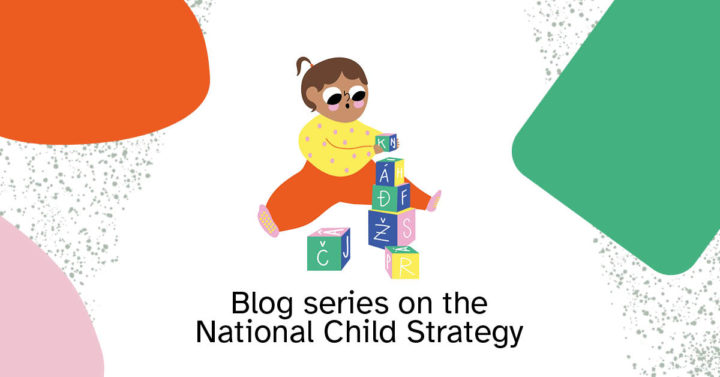The implementation of the National Child Strategy demands change
Blogs
Finland’s first ever National Child Strategy has been completed and published. And this is where the real work begins. The impact of the National Child Strategy is in its implementation. It challenges us to embrace change in terms of participation and inclusivity, leadership and culture. It demands us all to contribute.
Child welfare and family organisations have long been calling for a rights-based, parliamentary child strategy for Finland. The need for it was obvious. The rights of the child were not acknowledged by policy-makers the way they should have been. As a result, child and family policies, fragmented and short-sighted, are often in place for no longer than until the next election.
The first National Child Strategy for Finland was prepared by a parliamentary committee, which guaranteed the backing of all parliamentary groups. Currently, the drafting of the first implementation plan is in progress to bring the strategy to the practical level and introducing a set of indicators for systematic monitoring of the implementation of the strategy.
The title of the National Child Strategy, “A Finland for all children”, is a poignant reminder that in a child-friendly society there should be room for every child, and every child should be welcome. Finland has made concentrated efforts to build a more child-friendly society now for a period of several government terms. The National Child Strategy forms a solid basis for this work going forward.
National Child Strategy has been welcomed with enthusiasm
The monitoring working group for the National Child Strategy organised a seminar facilitated by the Itla Children’s Foundation on 17 May, which focused on the implementation plan for the National Child Strategy. The event was immensely popular, with 150 participants attending. We are delighted to see how much interest child strategy work is attracting among child and family welfare professionals. The participants joined in the active discussion on how the success of the implementation could be secured on a local, regional and national level. We also shared views on the importance and methods of collaboration and moving forward in the same direction.
As our seminar participants would agree, it goes without saying that the implementation of the strategy requires the input and participation of us all, most importantly the children and young people themselves. Enabling the inclusion of children and young people requires a systematic plan and is the responsibility of us adults. It would be wise to utilise the resources of various existing structures – for example, the preparatory bodies within counties, the family centre network, the network of child-friendly municipalities and the youth councils. Including children will introduce new perspectives and ideas, and their presence in the processes could help accelerate the implementation. Representation is not enough, however, and specific attention must be paid to the inclusion of the most vulnerable children.
The seminar participants stressed the importance of genuine collaboration across administrative boundaries as a precondition for achieving the goals of the strategy. The shared goal of improving the welfare of children must not be hindered by boundaries and obstacles between actors. The role of leadership and management by knowledge was also emphasised. It is essential to engage different local and regional organisations, including NGOs, across the board in the work at hand.
The National Child Strategy should also be integrated in the strategies adopted by each individual actor and thereby ensure its impact on day-to-day service provision. There is no doubt that the implementation of the National Child Strategy will set a major process of change in motion locally, regionally and nationally, particularly with regard to the public service culture.
Planning and monitoring are essential
The extensive assessment of the impact of various measures on children will produce plenty of knowledge that can inform further development end decision-making. It will enable more accurate evaluation of the practicality and effectiveness of different measures. In an ideal situation, the rights of the child will guide not only public policies but all decisions related to the lives and wellbeing of our children.
The practical measures included in the implementation plan are the tools that will help achieve the goals laid down in the National Child Strategy. For the National Child Strategy to maintain its impact through future government terms, systematic monitoring and evaluation, not to mention adequate resources, are necessary.
Another question that needs quickly to be resolved is who will take charge of the National Child Strategy. The most natural choice would be the Prime Minister’s Office.
Hanna Heinonen and Riitta Särkelä
Read more about the Child Strategy on the Child Strategy website.
